#Alchemical Tradition
Explore tagged Tumblr posts
Text
"Reflecting the Alchemist's Soul: Unveiling the Mysteries in 'The Mirror of Alchimy' by Roger Bacon"
In "The Mirror of Alchimy" Roger Bacon takes readers on a mesmerizing journey into the enigmatic world of alchemy, unraveling the veiled mysteries that have captivated seekers of esoteric knowledge for centuries. This seminal work, written in the late 16th century, serves as a timeless portal into the alchemical tradition, offering profound insights into the transformative processes of both the philosopher's stone and the adept's soul.
Bacon's narrative is a tapestry woven with allegorical threads, blending practical laboratory instructions with symbolic language that transcends the material realm. As the alchemist-author, Bacon speaks to readers across time, inviting them to contemplate the union of opposites, the refinement of base elements, and the pursuit of the elusive Elixir of Life.
The Mirror of Alchimy serves as a guide for those daring enough to tread the intricate labyrinth of spiritual transmutation. Bacon's prose, though rooted in the medieval context, resonates with universal themes— the quest for enlightenment, the cyclic nature of creation and destruction, and the pursuit of the divine within the earthly vessel.
At its core, this alchemical mirror reflects not only the external processes of laboratory experimentation but also the internal journey of self-discovery. Bacon intricately intertwines the art of transmutation with the science of the soul, urging the seeker to alchemize their own consciousness in tandem with their laboratory pursuits.
The brilliance of Bacon's work lies not only in its practicality but also in its poetic invocation of the alchemical quest. Each chapter unfolds like a mystical incantation, beckoning the reader to delve deeper into the alchemical opus. From the stages of calcination to coagulation, Bacon demystifies the alchemical process, making it accessible to both seasoned practitioners and those new to the alchemical tradition.
"The Mirror of Alchimy" is an illuminating testament to the enduring allure of alchemy—a profound exploration of the interconnectedness between the earthly and the celestial. As readers gaze into this alchemical mirror, they are not only confronted with the reflection of laboratory apparatus but also with the hidden recesses of their own spiritual landscape.
In a world where the pursuit of wisdom is often obscured by the mundane, Bacon's mirror serves as a timeless reminder that, like the alchemists of old, we are all engaged in the grand work of refining ourselves, transmuting the leaden aspects of our existence into the gold of inner enlightenment.
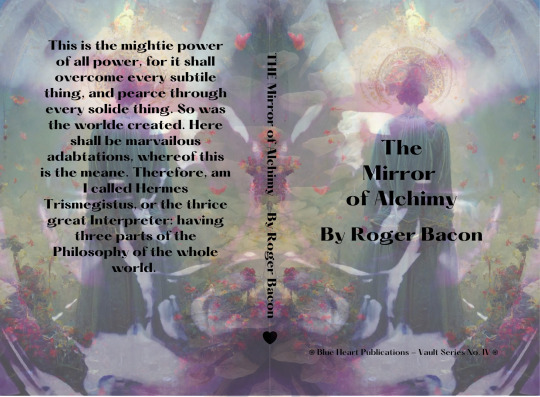
Roger Bacon's "The Mirror of Alchimy" is available in Amazon in paperback 12.99$ and hardcover 20.99$ editions.
Number of pages: 163
Language: English
Rating: 8/10 (Old English and Challenging Reading just like many alchemical works!!!)
Link of the book! (Hardcover); (Paperback)
Review By: King's Cat
#Alchemy#Roger Bacon#Hermeticism#Esoteric Knowledge#Medieval Philosophy#Alchemical Processes#Spiritual Transformation#Ancient Wisdom#Alchemical Symbols#Transmutation#Philosopher's Stone#Occult Science#Symbolism in Alchemy#Mystical Texts#Medieval Alchemist#Manuscripts#Alchemical Tradition#Spiritual Enlightenment#Hidden Knowledge#Symbolic Language
4 notes
·
View notes
Text
"Reflecting the Alchemist's Soul: Unveiling the Mysteries in 'The Mirror of Alchimy' by Roger Bacon"

In "The Mirror of Alchimy" Roger Bacon takes readers on a mesmerizing journey into the enigmatic world of alchemy, unraveling the veiled mysteries that have captivated seekers of esoteric knowledge for centuries. This seminal work, written in the late 16th century, serves as a timeless portal into the alchemical tradition, offering profound insights into the transformative processes of both the philosopher's stone and the adept's soul.
Bacon's narrative is a tapestry woven with allegorical threads, blending practical laboratory instructions with symbolic language that transcends the material realm. As the alchemist-author, Bacon speaks to readers across time, inviting them to contemplate the union of opposites, the refinement of base elements, and the pursuit of the elusive Elixir of Life.
The Mirror of Alchimy serves as a guide for those daring enough to tread the intricate labyrinth of spiritual transmutation. Bacon's prose, though rooted in the medieval context, resonates with universal themes— the quest for enlightenment, the cyclic nature of creation and destruction, and the pursuit of the divine within the earthly vessel.
At its core, this alchemical mirror reflects not only the external processes of laboratory experimentation but also the internal journey of self-discovery. Bacon intricately intertwines the art of transmutation with the science of the soul, urging the seeker to alchemize their own consciousness in tandem with their laboratory pursuits.
The brilliance of Bacon's work lies not only in its practicality but also in its poetic invocation of the alchemical quest. Each chapter unfolds like a mystical incantation, beckoning the reader to delve deeper into the alchemical opus. From the stages of calcination to coagulation, Bacon demystifies the alchemical process, making it accessible to both seasoned practitioners and those new to the alchemical tradition.
"The Mirror of Alchimy" is an illuminating testament to the enduring allure of alchemy—a profound exploration of the interconnectedness between the earthly and the celestial. As readers gaze into this alchemical mirror, they are not only confronted with the reflection of laboratory apparatus but also with the hidden recesses of their own spiritual landscape.
In a world where the pursuit of wisdom is often obscured by the mundane, Bacon's mirror serves as a timeless reminder that, like the alchemists of old, we are all engaged in the grand work of refining ourselves, transmuting the leaden aspects of our existence into the gold of inner enlightenment.
Roger Bacon's "The Mirror of Alchimy" is available in Amazon in paperback 12.99$ and hardcover 20.99$ editions.
Number of pages: 163
Language: English
Rating: 8/10 (Old English and Challenging Reading just like many alchemical works!!!)
Link of the book!
Review By: King's Cat
#Alchemy#Roger Bacon#Hermeticism#Esoteric Knowledge#Medieval Philosophy#Alchemical Processes#Spiritual Transformation#Ancient Wisdom#Alchemical Symbols#Transmutation#Philosopher's Stone#Occult Science#Symbolism in Alchemy#Mystical Texts#Medieval Alchemist#Manuscripts#Alchemical Tradition#Spiritual Enlightenment#Hidden Knowledge#Symbolic Language
1 note
·
View note
Text
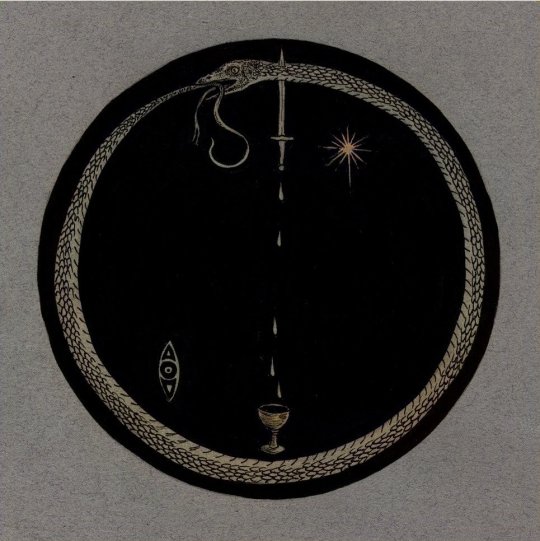
#ouroboros#esoteric#uroboros#ancient symbols#serpent#snake#dragon#tail#alchemy#norse mythology#ancient greek#alchemical#cycle of life#jörmungandr#jormundgandr#sword#cup#magic#magical#tradition#art#symbol#europe#european#snakes#history#sun#swords#norse#greek mythology
2K notes
·
View notes
Text
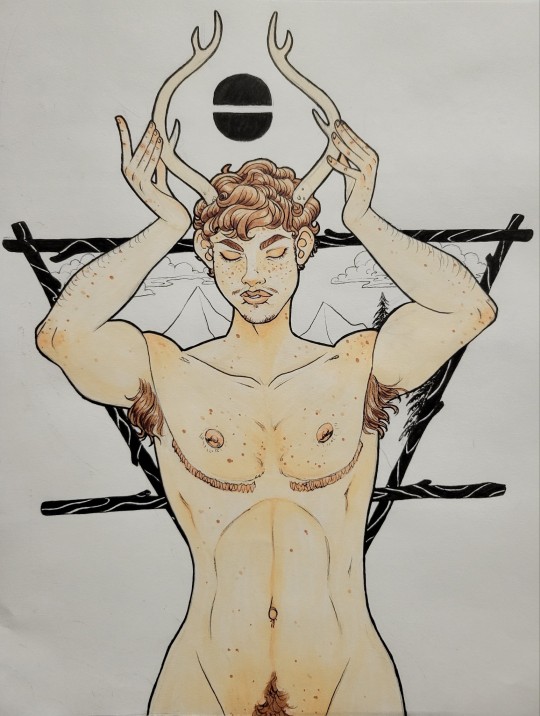
339 notes
·
View notes
Note
i'm so curious about if you would provide any more context and info about the hp fascism essay, it sounds fascinating
i've posted about it before but i don't really wanna talk about it in too much detail publicly before the essay goes up, bc the posts frequently circulate out of my immediate circle and like. given the everything about jkr i am not interested in people taking me out of context or like, telling me off for still posting about hp, or whatever. also i have a mental illness where i can't talk about stuff i'm working on in detail until it's done. and this is a very long-term project that i've been picking at for years at this point and which has been percolating for even longer.
long story short is that i have always been fascinated by hp fandom's inability to balance the very obvious what-if of harry sorting into slytherin with the also very obvious fact that slytherin is full of genocidal fascists. it doesn't so much have to do with what's in the books as it does what gets noticed, used, exaggerated, justified by fans, in order to have people coming up with the same "compromises" and "solutions" to the tensions in the series - me & my cowriter julia fromcollege are interested in how fandom creates "desire paths" to cover the shortest distance between canon and what fic writers care about, and those can be very consistent across a fandom (including in work by many fic authors who consider themselves thoughtful and progressive!) -- and many of those desire paths end up treading some pretty treacherous ground.
edit: also this is not academic work, which means it's been on the back burner! it's for fun. because. i do think this is fun. i like to be a hater for a good cause.
#it's not only about slytherin harry fic but it's much more common there. but this shit is RANK and endemic everywhere in hp fandom i've seen#like to clarify this is about fandom and fic. i have really serious ideological issues with the canon but they are. uh.#based on the way hp presents the european esoteric / alchemical tradition & other structural flaws in masquerade setup that are antisemitic#largely. i have other beefs also and obviously jkr is VILE now - but that's my big one that is way too niche to get into on a regular basis
31 notes
·
View notes
Text

In western mythos, we are mostly familiar when a feminine moon and masculine Sun. In certain traditions around the world, especially in folklore concerning solar eclipses, the sun is instead feminine and the moon is masculine:
In Norse mythology, the solar goddess Sol and lunar god Mani are sister and brother.
In Tahitian myth, the Sun goddess and mother of rice, Padi, and the dark moon (each moon phase has varying names) are lovers who are said to be getting ‘lost in the moment’ when they create a solar eclipse.
Inuit lore has told of the Sun goddess Malina being chased across the sky by her brother, the moon god Igaluk. Occasionally he catches up with her for a brief reunion and everything goes dark.
In the indigenous Euahlayi stories from Australia, the Sun is a woman, Yhi, and the moon as a man, Bahloo. Yhi falls in love with Bahloo and chases him across the sky. Yhi tells the spirits that hold up the sky that if they let Bahloo escape then she will plunge the world into darkness. So during a total solar eclipse, medicine men traditionally chant to connect with the spirits of the sky to allow the moon, Bahloo, to continue to enchant and Yhi in this celestial chase.
I made this illustration adapted from my tattoo flash for Magic PJ’s PMU & Tattoo to share this with you.
#mythology and folklore#solar eclipse#sun goddess#traditional tattoo#celestial#whimsicore#astro art#world mythology#folklore#alchemical symbolism
32 notes
·
View notes
Text
I've been thinking about this for a hot min and I think it's kinda weird Skyrim has a reputation for being dirty?? Like yeah the people can look a little dingy but it's usually those who are outside working hard.
But I think outside of that they'd probably be pretty clean?? Horkers are available in excess like do you think there wouldn't be a portion of their fats being used to make soap by the truckload?? Skyrim would have so much horker soap like come on
#thoughts that make you google 'traditional soap making' at 12:30 am bc youre doubting your own soap knowledge#troll fat is an alchemical ingredient too but tbh horker fat should be too bc theyre easy to hunt and are fucking Everywhere#plus we already see lavender being used as a sort of perfume being on bedsides and stuff#tumblrs favorite greasy rat men are still greasy tho. they just choose to be that way#skyrim#the elder scrolls#tesblr#musings#i know sload soap was a thing in morrowind but there are no sloads in skyrim and that drains your fucking personality#also arent sloads like... people??? use the horkers theyre right there
22 notes
·
View notes
Text
an instance of daoist transgender sorcery
there's this old paper by isabelle robinet i reread like half a year ago which around the middle of p. 46 mentions an early medieval daoist text yuanshi wulao chishu yupian zhenwen tianshu jing (DZ 22 i believe) which contains instructions for talismans which transform your gender. obviously that's pretty cool so here's my go at a translation, i figured i might as well share it. i will admit my classical chinese could be better but the language is Relatively easy to follow and i'm reasonably confident in the majority of my translation (nonetheless i beg indulgence for any errors...). not to mention the ctext edition (this is the original edition with the talismans proper, this is the punctuated version that's the base for my translation) is extremely accessible . so here, i hope you enjoy maybe someone vaguely in my internet circle will get something out of this .
(something of a sequel to that citation on gender transformation as an ill omen in han times)
九天太素陽生符,元始付太上丈人,其文在赤書後劫,見日宮之陽。
The talisman of yang generation of the Great Simplicity in the Nine Heavens was handed down by the Primordial Commencement to the Old Man of the Most High; its text resided in the Red Writings. After an eon, it manifested the yang of the Sun Palace.

玄都紫微宮舊格,丹書白素,方五寸,清齋百日,入室思日精,含而吞之,與日同壽,天地俱存,思靈念真,���自能飛。存濁炁於口,符既出而死也。一名生真券,一名八威龍書。女吞此符後,生為男身。
According to the old rules of the Palace of Purple Tenuity in the Mysterious Capital, it is written in vermilion on white silk, five inches square. After pure fasting of a hundred days, enter the chamber and meditate on solar essence. Encompass and swallow it. One will share the same longevity with the sun, persisting together with Heaven and Earth — meditate on numinosity and think on perfection, and one's form will be able to fly of itself. If turbid qi is visualized in the mouth, then the talisman will leave and one will die. Another name is the certificate of generating perfection; another name is the dragon-writing of the Eight Majesties. After a woman swallows this talisman, they will generate a male body.
三天太玄陰生符,元始以付太上大道君,其文在赤書後二劫,見月之上館。
The talisman of yin generation of the Great Mystery in the Three Heavens was handed down by the Primordial Commencement to the Most High Great Lord of the Way; its text resided in the Red Writings. After two eons, it manifested the High Office of the Moon.

玄都紫微宮舊格,黑書黃繒,方五寸,清齋百日,入室思月精;含而吞之,與月同壽。道士欲尸解者,黑書木刀劍,抱而臥,即為代人形而死矣。行此宜精,他念穢濁于口,符即出,身即死。此符一名化形券,一名九陰靈書,男人吞此符後,化為女子。
According to the old rules of the Palace of Purple Tenuity in the Mysterious Capital, it is written in black on yellow silk, five inches square. After pure fasting for a hundred days, enter the chamber and meditate on lunar essence. Encompass and swallow it — one will share the same longevity with the moon. Daoists who desire liberation from the corpse should write it in black on a wooden sword, embrace it, and go to sleep; it will take on your human form and die. When practicing this proper essence, if one has other thoughts of filth or turbidity in the mouth, the talisman will leave, and the body will die. Another name for this talisman is the certificate of transforming forms; another name is the numinous writing of the Nine Yin. After men swallow this talisman, they will transform into women.
此二符,陰陽二氣,日月之精,自不精身苦志,慎輕服御,惟清齋合式,即能無窮。
These two talismans are the Two Qi of yin and yang and the essences of the sun and moon. Even if one does not refine one's own body or discipline one's own will, cautiously making light of clothing and deportment, and only engages in the ceremony of pure fasting, they will be able to be boundless.
#i know i presuppose a familiarity with the traditions of the shangqing and lingbao which i doubt many have...#cun aren't really Exactly inches but its good enough an analogy; same for “eon”/kalpa here#daoism#occultism#it goes without saying that there's a real and unpleasant degree of oppositional sexism baked into yin-yang theory#nonetheless i think the underlying potential/intention here is delightful#(another topic of interest in this vein is symbolic male pregnancy and female masculinization in the daoist internal alchemical tradition)
6 notes
·
View notes
Text

consistent posting? i hardly know her!!!
0 notes
Text
What is "Alchemic Dungeons (DX)"?


Alchemic Dungeons is a roguelike with crafting. Find materials to make new equipment while you explore dungeons. Alchemic Dungeons DX is a PC/console port that adds new classes, items, and dungeons. If you have played Mystery Dungeon games (think PMD's Purity Forest), Alchemic Dungeons has a similar vibe.
This game consists of levels, each with more and more floors. Meta-Progression is in the form of unlocking new crafting recipes. Any equipment you find does not carry over between levels. My tip is making arrows ASAP. They are really good and can even be used before you make/find a bow.
The original was on iOS and 3DS; DX is on Steam, iOS, and Nintendo Switch.
Fun fact: I bought the 3DS version of the original game just a few months after DX was announced. It was one of the last purchases I made before the 3DS eShop shut down.
#Alchemic Dungeons#Roguelike#Traditional Roguelike#Pixel Graphics#Mystery Dungeon#Blu's Niche Games#iOS games#3DS#Steam games#Nintendo Switch
1 note
·
View note
Text
Alchemical Marvels: Navigating the Secrets of Collectanea Chemica

Arthur Edward Waite's "Collectanea Chemica" is a captivating exploration into the enigmatic realms of alchemy and hermetic medicine, transcending time to unveil the mystical allure of ancient wisdom. With its rich tapestry of select treatises, this book beckons readers on a mesmerizing journey through the esoteric corridors of the alchemical tradition.
Waite, a distinguished scholar and esotericist, curates a collection that serves as a portal to the profound insights of alchemists and hermetic practitioners. The book’s pages are imbued with the mystique of the past, offering glimpses into the spiritual and transformative pursuits that have echoed through the ages.
The treatises within "Collectanea Chemica" serve as illuminated manuscripts of alchemical philosophy, each unfolding a unique facet of the practitioner's quest for enlightenment. From the Magnum Opus to the pursuit of the Philosopher's Stone, Waite guides readers through the labyrinthine corridors of alchemical thought, where base metals transform into gold, and the elixir of life beckons with promises of immortality.
Waite’s meticulous annotations and commentary provide a guiding light, illuminating the complex symbolism and allegorical language employed by alchemists. His insightful notes bridge the temporal gap, making the esoteric knowledge accessible to modern seekers of wisdom.
The title itself, "Collectanea Chemica," resonates like an incantation, conjuring the very essence of ancient laboratories and the alchemist's pursuit of the arcane. It beckons readers to delve into the alchemical opus, enticing them with promises of arcane knowledge and the potential for profound transformation.
In essence, "Collectanea Chemica" is not merely a book but a transcendental guide—an alchemical roadmap inviting intrepid minds to decipher the secrets of hermetic wisdom. Arthur Edward Waite, with his scholarly finesse, ensures that the alchemical fire within these pages continues to burn, casting its luminous glow on those who dare to embark on this intellectual and spiritual odyssey.
Arthur Edward Waite's "Collectanea Chemica" is available in Amazon in paperback 11.99$ and hardcover 18.99$ editions.
Number of pages: 138
Language: English
Rating: 9/10
Link of the book!
Review By: King's Cat
#Alchemy#Hermetic Medicine#Arthur Edward Waite#Magnum Opus#Philosopher's Stone#Esoteric Wisdom#Mystical Tradition#Alchemical Treatises#Spiritual Transformation#Occult Knowledge#Elixir of Life#Transmutation#Symbolism#Ancient Wisdom#Illuminated Manuscripts#Hermeticism#Alchemical Philosophy#Secret Knowledge#Metaphysical Exploration#Alchemical Symbolism#Spiritual Alchemy#Mystical Illumination#Philosophical Gold#Transcendental Insights#Occult Tradition#Esoteric Manuscripts#Alchemical Secrets#Symbolic Language#Immortality Quest
6 notes
·
View notes
Text
"The Initiates of the Flame: Illuminating the Path to Esoteric Wisdom"
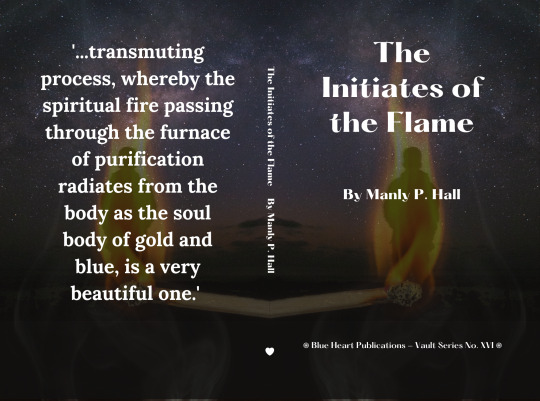
In "The Initiates of the Flame," Manly P. Hall takes readers on a captivating journey into the profound realms of esoteric knowledge and spiritual enlightenment. Hall's meticulous exploration of ancient mystical teachings serves as a beacon, guiding readers through the intricate tapestry of secret wisdom. With eloquence and depth, the author unravels the symbolic language of the initiates, revealing timeless truths that resonate with seekers of spiritual understanding.
Hall's narrative is a tapestry woven with threads of mystery, unveiling the sacred rites, hidden symbols, and spiritual allegories passed down through the ages. The book becomes a key unlocking the doors to higher consciousness, inviting readers to contemplate the esoteric principles that underpin the universe. As Hall delves into the teachings of the initiates, he sheds light on the transformative journey one must undertake to unlock the secrets of the flame—the eternal source of spiritual illumination.
The Initiates of the Flame is not merely a book; it is a profound meditation on the esoteric traditions that have shaped humanity's quest for spiritual enlightenment. Hall's insights are a testament to his deep understanding of the ancient mysteries, offering readers a glimpse into the hidden dimensions of existence. This work is a must-read for those who seek to unravel the mysteries of the flame and embark on a transformative journey toward higher knowledge and self-realization.
"The Initiates of the Flame," Manly P. Hall is available in Amazon in paperback 10.99$ and hardcover 18.99$ editions.
Number of pages: 167
Language: English
Rating: 9/10
Link of the book!
Review By: King's Cat
#Esoteric Wisdom#Spiritual Illumination#Ancient Mysteries#Initiatic Teachings#Hidden Symbols#Symbolic Language#Higher Consciousness#Spiritual Transformation#Sacred Rites#Mystical Traditions#Secret Knowledge#Spiritual Allegories#Metaphysical Exploration#Initiatory Journey#Universal Truths#Occult Wisdom#Hermetic Philosophy#Alchemical Insights#Transcendental Knowledge#Self-Realization
6 notes
·
View notes
Text
taurus degrees in the natal chart (2°, 14°, 26°)
2° = really connected to your physical senses, strong + stubborn preferences, naturally gifted + can easily attract money, gets money but doesn't necessarily know how to sustain it, self worth is connected to what the planet represents, hoarder, consumes without much discernment, creativity comes easy, attractive, gluttonous, strong innate connection to the earth, strong values instilled from childhood, usually traditional, stubborn attitude it comes to your missions on earth, don't let the world rush your process, naive, here for a good time + a long time, strong libido, sexually immature, make sure your taste grows as you continue to grow, naturally clairaudient
14° = strong attachments, hard to move on, here to develop your self-worth, changes in values that are more authentic to you, loyal to a fault, need to learn how to manage utilize sexual energy to your advantage, blocked throat chakra, stand on your values, hedonist, struggles with poor diet, people usually see your worth + potential before you do, tendency to overwork self, earth witch, struggles with stagnancy, strong sacral energy, values strong foundation, establish strong boundaries, too practical + too little faith, being gaslit for strong boundaries, craves peace, young mom vibes, lack of patience, enjoy the journey, great taste but pockets need to match that, promiscuous, stubborn + picky eater, affirm yourself: i deserve this!
26° = overcome poverty mindset, self-sustenance is a big theme in life, money savvy, empress energy, strong values, the marriage type, strong fertility, oshun archetype, meant to be wealthy, generational wealth, disciplined + dedicated, the stronger the self-worth/values the more money you accumulate, alchemize with the elements, knowing what's best for you + standing on that, very bougie, can manifest with ease using womb/sacral energy, emotionally grounded, use sex to create your dream life, sugar daddy/mommy vibes, family looks at you for financial support (set boundaries), findom, your creativity supports your lifestyle

#daportalpractitioner#astrology observations#astro observations#astrology#astro notes#astrology notes#astrology predictions#astrology community#astroblr#taurus#taurus degrees#spirituality#taurus placements#taurus sun#taurus moon#taurus rising#astro tumblr#astro placements#astrology readings#astro community#astrology signs#degrees in astrology#astrology degrees#astro predictions#astrology tips#astroloji
1K notes
·
View notes
Text
𝖀𝖓𝖉𝖊𝖗𝖘𝖙𝖆𝖓𝖉𝖎𝖓𝖌 & 𝖀𝖘𝖎𝖓𝖌 𝕸𝖆𝖌𝖎𝖈𝖆𝖑 𝕮𝖔𝖗𝖗𝖊𝖘𝖕𝖔𝖓𝖉𝖊𝖓𝖈𝖊𝖘
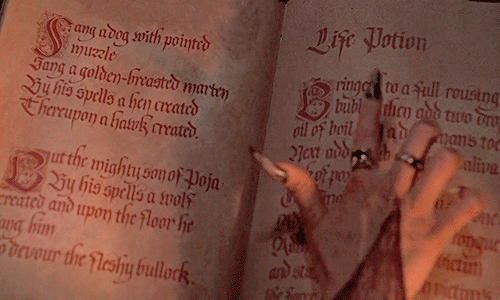
Witchcraft magical correspondences refer to the associations made between various objects, substances, times, and events with specific magical effects or purposes. These correspondences have deep historical roots and derive from a blend of multiple sources, including ancient alchemy, early science, cultural symbolism, religious beliefs, and intentionality.
Ancient Alchemy
Alchemy, the precursor to modern chemistry, played a significant role in shaping magical correspondences. Alchemists sought to understand the mysteries of matter and the transformation of substances, often imbuing their experiments with spiritual and mystical significance. For example, the seven classical planets (Sun, Moon, Mercury, Venus, Mars, Jupiter, and Saturn) were associated with specific metals (gold, silver, mercury, copper, iron, tin, and lead, respectively). These associations were believed to reflect the planets’ influences on earthly matters and human affairs. Alchemical texts also explored the relationships between colors, elements, and spiritual principles, influencing the development of magical correspondences in witchcraft.
Ancient alchemy holds a significant place in the history of science, philosophy, and mystical traditions, influencing various fields and practices, including witchcraft. The importance of ancient alchemy can be understood through its contributions to the development of modern science, its philosophical and spiritual dimensions, and its enduring influence on magical and esoteric traditions.
The Great Work (Magnum Opus): Central to alchemy is the concept of the Great Work, which symbolizes the alchemist’s quest for spiritual and material transformation. This process involves the purification and perfection of substances, often mirroring the alchemist’s inner spiritual journey toward enlightenment and self-realization.
Symbolism and Allegory: Alchemical texts are rich in symbolism and allegory, using metaphors to convey complex philosophical and spiritual concepts. Symbols such as the philosopher’s stone, the ouroboros (a serpent eating its own tail), and the four elements (earth, air, fire, water) encapsulate profound ideas about the nature of reality, transformation, and the interconnectedness of all things.
Hermetic Tradition: Alchemy is closely associated with Hermeticism, a philosophical and spiritual tradition based on the writings attributed to Hermes Trismegistus. Hermetic principles, such as “As above, so below” and the unity of opposites, permeate alchemical thought and emphasize the correspondence between the macrocosm (the universe) and the microcosm (the individual).
Magical Correspondences: Alchemical principles and symbols have been integrated into various magical and esoteric traditions. The associations between planets, metals, and elements in alchemy have become foundational correspondences in many forms of magic and witchcraft.
Transmutation and Transformation: The alchemical goal of transmutation, particularly the transformation of base metals into gold, has a symbolic counterpart in magical practices. This idea of transformation is applied to personal growth, healing, and the manifestation of desires through magical means.
Ritual and Practice: Alchemical rituals, with their focus on purification, transformation, and the attainment of higher states of being, have influenced the structure and content of magical rituals. The use of specific substances, tools, and processes in alchemy has parallels in magical workings, emphasizing the transformation of both the practitioner and the environment.
Alchemy in the Renaissance: During the Renaissance, alchemy experienced a revival as scholars and practitioners sought to integrate ancient wisdom with emerging scientific knowledge. Figures like Paracelsus and John Dee contributed to the development of alchemical thought, blending it with medicine, astrology, and early chemistry.
Psychological Alchemy: In the 20th century, Carl Jung, a prominent psychologist, explored alchemy as a metaphor for psychological processes. Jung’s interpretation of alchemical symbolism as representing the individuation process—the integration of the conscious and unconscious mind—brought new insights into the relevance of alchemy for personal development and psychotherapy.
Contemporary Practice: Today, alchemy continues to inspire both scientific inquiry and spiritual exploration. Modern alchemists, both literal and symbolic, seek to uncover the hidden principles of transformation in nature and the self. The enduring appeal of alchemy lies in its holistic approach, integrating material, psychological, and spiritual dimensions of existence.
Early Science and Natural Philosophy
Early scientific observations and natural philosophy also contributed to the development of magical correspondences. Ancient and medieval scholars often categorized the natural world into elements (earth, air, fire, and water) and humors (blood, phlegm, yellow bile, and black bile), each with specific qualities and effects. These classifications were used to explain natural phenomena and human health, and they found their way into magical practices. For instance, herbs and stones were categorized based on their perceived elemental qualities, and their uses in magic were aligned with these characteristics.
Cultural Symbolism and Mythology
Cultural symbolism and mythology provided another rich source of correspondences. Different cultures imbued animals, plants, colors, and objects with symbolic meanings based on their myths, legends, and folklore. For instance, the oak tree was sacred to many ancient European cultures and associated with strength and protection, while the owl, often seen as a symbol of wisdom in Greek mythology, became associated with knowledge and divination in magical practices. These symbolic associations were passed down through generations and integrated into the magical correspondences of witchcraft.
Religious Beliefs and Practices
Religious beliefs and practices also shaped magical correspondences. Many magical traditions borrowed from the rituals and symbols of dominant religious practices in their regions. In Western Europe, for instance, Christian symbols and saints were often syncretized with older pagan deities and symbols. The use of incense, candles, and specific prayers or chants in magic often mirrors religious rituals, emphasizing the importance of intentionality and spiritual alignment in magical workings.
Intentionality and Personal Experience
The role of intention and personal experience cannot be overlooked in the development of magical correspondences. Practitioners of witchcraft often develop their own associations based on personal experiences, intuition, and the results of their magical workings. This process of individual experimentation and reflection allows for a dynamic and evolving system of correspondences that can vary between different traditions and practitioners. The intention behind the use of a correspondence is believed to be a critical factor in its effectiveness, highlighting the importance of the practitioner’s focus and purpose.
Synthesis and Evolution
Over time, these diverse influences have synthesized into the rich tapestry of magical correspondences used in witchcraft today. Texts such as the “Key of Solomon,” “The Picatrix,” and various grimoires have codified many of these correspondences, while modern practitioners continue to adapt and expand them based on contemporary understanding and practice. The integration of psychological insights, ecological awareness, and cross-cultural exchanges in the modern era further enriches the system of correspondences, making it a living and evolving aspect of witchcraft.
No single person or group decided these correspondences; rather, they evolved organically through the accumulated wisdom and practices of different cultures. Here are some key influences and sources:
Ancient Civilizations
Egyptians: Ancient Egyptian priests and magicians developed extensive knowledge of correspondences. They believed that everything in nature was interconnected and that specific plants, stones, and symbols held particular powers. Their practices were recorded in texts like the Ebers Papyrus and various temple inscriptions.
Greeks and Romans: The Greeks and Romans contributed significantly to the development of correspondences, particularly through the work of philosophers and physicians like Hippocrates, Theophrastus, and Pliny the Elder. Their writings on herbalism, astrology, and natural philosophy helped establish connections between natural elements and their supposed properties.
Celts: The Druids of the Celtic world had a deep understanding of nature and used various plants, trees, and natural phenomena in their spiritual and magical practices. Their knowledge was passed down orally and later recorded by Christian monks.
Medieval and Renaissance Europe
Medieval Herbalists and Alchemists: During the Middle Ages, herbalists and alchemists in Europe studied ancient texts and conducted their own experiments. They documented the properties of plants, minerals, and metals in texts like the “Materia Medica” and various grimoires. Alchemical traditions, which sought to transform base materials into higher forms, also contributed to the understanding of correspondences.
Astrology: Medieval and Renaissance astrologers played a significant role in establishing correspondences, particularly through the association of planets with specific days of the week, metals, and plants. The writings of figures like Ptolemy and later Renaissance magicians like Cornelius Agrippa and Paracelsus were influential in this regard.
Eastern Traditions
Chinese Medicine and Taoism: Traditional Chinese medicine and Taoist practices developed a system of correspondences based on the Five Elements (Wood, Fire, Earth, Metal, Water). These elements were connected to various aspects of life, including organs, emotions, seasons, and directions. The “Huangdi Neijing,” an ancient Chinese medical text, is a key source of this knowledge.
Indian Ayurveda and Hinduism: Ayurvedic medicine and Hindu spiritual practices established correspondences between herbs, gems, times of day, and deities. Texts like the “Atharva Veda” and various Ayurvedic treatises documented these associations.
Modern Influences
Grimoires and Occult Literature: From the Renaissance onward, numerous grimoires (books of magic) compiled and expanded upon earlier correspondences. Notable examples include the “Key of Solomon,” “The Lesser Key of Solomon,” and “The Picatrix.” These texts were influential in shaping modern Western magical practices.
The Golden Dawn and Modern Witchcraft: In the late 19th and early 20th centuries, the Hermetic Order of the Golden Dawn and similar occult organizations synthesized various magical traditions, creating detailed systems of correspondences. Influential figures like Aleister Crowley and Dion Fortune contributed to this synthesis. In the mid-20th century, Gerald Gardner and others who founded modern Wicca drew upon these traditions, further popularizing and systematizing magical correspondences.
Conclusion
Magical correspondences are the result of centuries of observation, experimentation, and synthesis by various cultures and traditions. They were not decided by any single individual or group but evolved over time through the collective wisdom of countless practitioners. Today, they continue to be an essential part of many magical and spiritual practices, providing a framework for understanding and working with the interconnectedness of the natural and spiritual worlds.
#divination#free tarot readings#spirituality#witchblr#tarot#witch#witchcraft#high priestess house#witch community#astrology#eclectic witch#correspondences#witch history#witches of tumblr#occult history#occultism#occult#witchy vibes#witchcore#witch aesthetic#baby witch#witches#witchcraft 101#moon witch#witchy#alchemy#psychology#herbalism#herbalmedicine#alchemist
432 notes
·
View notes
Text
Writing Reference: Alchemy
Some scholars say alchemy comes from the Greek cheo, meaning “I pour” or “I cast,” since much of alchemy has to do with the working of metals.
But many believe the word comes from the Egyptian Khem, meaning “the black land” (land with black earth), and see that as indicating Egypt as alchemy’s place of origin:
The Arabic article al was added to Khem to give alchemy.
Alchemy is an ancient art, at the heart of which lies the manufacture of a mysterious substance called the Philosopher’s Stone.
Later, as the science (some call it a pseudoscience) progressed, the article was again dropped, to become chemistry.
Alchemy certainly is the early history of chemistry.

The Philosopher's Stone - the highly desirable and legendary object that is said to transform base metals—such as lead—into gold.
However, the gold in this instance symbolizes not just the valuable metal, but enlightenment and eternal life, and Alchemists are concerned with their own spiritual and personal development as well as the pursuit of the seemingly unattainable goal.

The Chinese differentiate these different kinds of alchemy as nei-tan (the alchemy of spiritual transformation) and waitan (the straightforward “lead-into-gold” type).
The motto of the Alchemists is Solve et Coagula, meaning “Solution and Coagulation.”
The work of the early Alchemists was necessarily a secretive and clandestine matter, and its secrets are still held within a rich encrustation of symbols, pictures, oblique references, double meanings, and riddles.
Alchemical symbolism features animals, birds, colors, and parables as well as archetypal symbols such as the Cosmic Egg.
The key tenets of alchemy are encompassed in something called the Smaragdina Tablet, or the Emerald Tablet.

The tablet is said to have been found by Alexander the Great in the tomb of Hermes Trismegistus (Hermes the Thrice Great) who is the founder of all things alchemical.
The Alchemical Tradition exists/existed in Ancient Egypt, China, and India, but its most recent incarnation was in medieval Europe.
Those who dabbled in alchemy include the famous and the infamous, such as John Dee (astrologer to Queen Elizabeth I), Paracelsus, Albertus Magnus, Christian Rosenkreuz, Nicholas Flamel, and Isaac Newton.
Some of the chemical treatises are befuddling to even the most learned of scholars, but the very word “alchemy” is almost in itself a symbol, conjuring up images that are magical, mystical, and marvelous.

Sources: 1 2 3 4 ⚜ Writing Notes & References
#writing reference#alchemy#symbols#writeblr#langblr#linguistics#literature#fantasy#writers on tumblr#writing prompt#poetry#poets on tumblr#spilled ink#dark academia#light academia#lit#writing inspiration#writing inspo#writing ideas#creative writing#writing resources
253 notes
·
View notes
Text
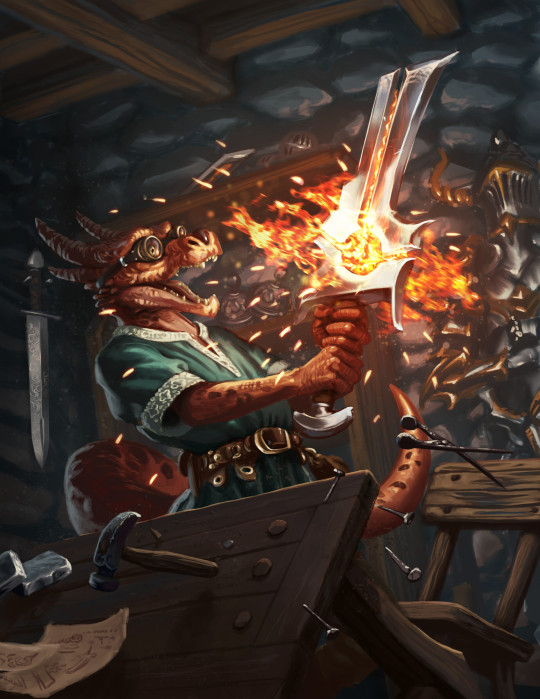
Monsters Reimagined: Kobolds
I started playing d&d during 3rd edition, which presented kobolds as a trap happy gaggle of dragon obsessives who were counted as the weakest but smartest of the traditional dungeonfodder humanoids. Other than being lizardy they were presented near identically to goblins, both being petty and cruel and resentful over their small stature and the place it meant they occupied in the world. This overlap is actually one of the reasons I haven't gotten to kobolds before now, as I kinda felt like I covered most of it in my writeup for goblins a couple years ago.
Since Kobolds are a reoccuring request however I eventually decided I was going to give the people what they wanted. My plan was to talk about d&d dragonsimp kobolds vs. warcraft candleloving kobolds vs. jrpg dogpeople kobolds, and how all of these relate back to creature's mythological origin but hey wait a minute the official forgotten realms wiki says WHAT ?

Huh, that sounds like a weird sort of projection from a man who's super insecure about his height. I wonder if the original dragon magazine listed as a source here has anything more to.. Oh.... OH-NO

Living space, huh? Extinction of weaker peoples, eh? A religion based around survival, insularity, obedience, and the defeat of stronger enemies through attrition, yadon'tsay? Man, the canine kobolds might be on to something because there's an ORCHESTRA of dogwhistles going on here.
Friends, there's a lot to unpack here, so like a kobold with a pickax lets dig in
Where it started: the connection between kobolds and goblins and gnomes predates d&d back to mythological roots, as all are names shared by the european folklore character of "weird little guy who lives under the hill and plays tricks on us". Kobolds have an even more delightful bit of etymology attached, as miners blamed them for magically transforming valuable silver for (at the time) worthless cobalt. Originally my rehash of kobalds was going to centre on them as tinkerers/engineers for this reason, as alchemical cobalt batteries sound rad as hell.
Kobolds are in this way also part of the greater traditions of "mine spirits", Knackers, tommyknockers, and the like. Who play tricks on miners, and are just as likely to cause disaster when displeased as they are to warn of it when befriended.
Then the d&d authors did what they always do, they pilfered the name of folkloric creatures for the game while ignoring actual mythology, drawing hard and fast lines and making up rigid catagories as they went.
What's wrong: Given their proclivity for traps, sneak attacks, and guerilla tactics you end up getting a LOT of comparisons between Kobolds and the Viet Cong… which I find very telling. So many of the original d&d antagonists were vessels for middle aged geeks of the 70s and 80s to hit back at their insecurities ( whether it be challenges to their masculinity, sexuality, or something more existential) it doesn’t surprise me at all that d&d has an enemy that let american boomers rehash their nation’s at the time biggest military debacle.
Kobolds are so weak and undeserving you understand, they’ve only survived because they’re tricky, but this time we’ll get them, if we come in with enough firepower and hirelings to get through the meatgrinder we can finally hit them where they live and deal with them for good.
D&D worldbuilding imagines kobolds as “the other” from an occupier’s lens: resentful of their rightful displacement, nursing their hatreds in the shadows, emerging only to attack or to steal and despoil what they’ve been denied. They have no ambition, no culture, no wants beyond being a threat for the new dominant power. They’re cowards for using traps and poison and tactics on those here to plunder their homes.
What’s worth Salvaging: While the 3e revision of kobolds as dracomaniacs is a welcome change from their old lore I’m not especially fond of it. Overuse of dragons is one of the things that most turns me off general fantasy media. Any group of sapient creatures serving a dragon is just as likely to form a dragoncult, it doesn’t make kobolds special.
That said, if you did want to double down on kobold dragon worship you might consider spicing in a few elements from my revamped version of Tiamat, painting their reverence not just as ego and overcompensation but as a desire to emulate and become…certian kobold enclaves possibly using sorcery or alchemy to transform a chosen among their people into a fully fledged wyrm.
While we’ve mostly tossed alignment to the curb where it belongs,to distinguish kobolds from goblins it might be worth leaning into their lawful aspects; Underfoot foremen and notaries and work crews addressing things with a utilitarian collective effort before scurrying out of sight when the shift change occurs. Where as goblins are screwball and slapstick onto the verge of cartoonishness, perhaps kobolds are practical and industrious to the point of causing problems: They dam a river to access a sacred cave heedless of the disruption and flooding it’d cause, they tear down, occupying and restoring a derelict mill and restoring it to function regardless of who owns it, undermining the foundations of the duke’s palace following a vein of copper in the nearby hills.
This efficiency-focused attitude also helps thematically define mechanically minded kobolds against gnomes and dwarves as the game’s other tinkerers: They share the practicality of dwarven artisans and the inventiveness of gnomish artificers, but lack the sentiment the other two place on what they make. Kobold craft is often regarded as lower quality, but that’s because resource efficiency and easy replaceability are primary metrics upon which they judge something.
Artsource
377 notes
·
View notes